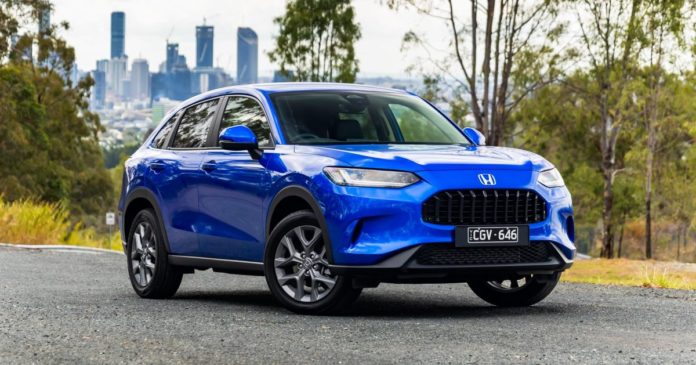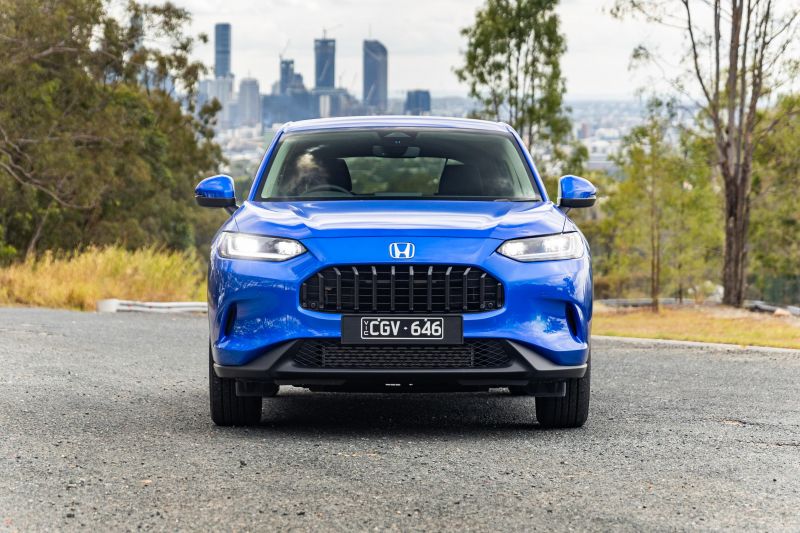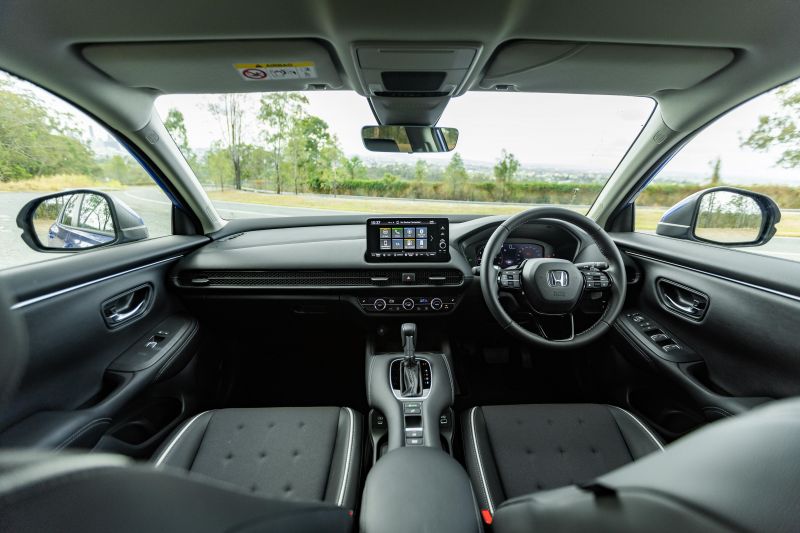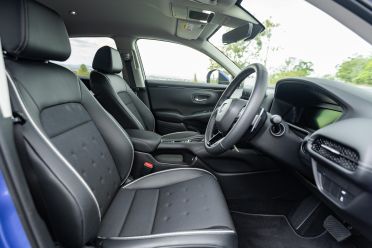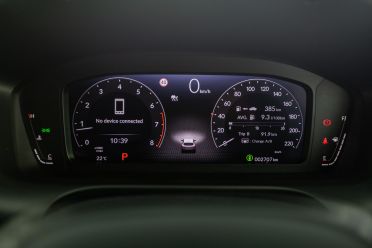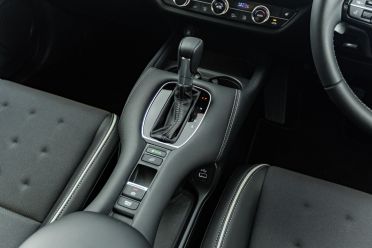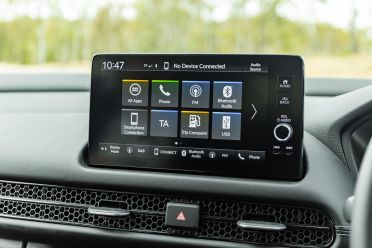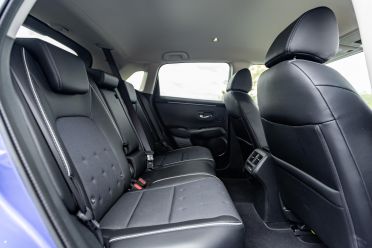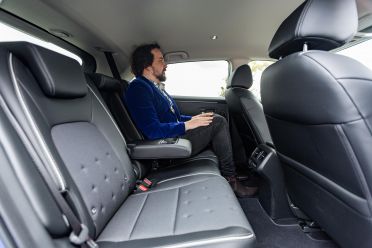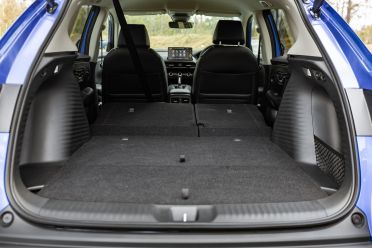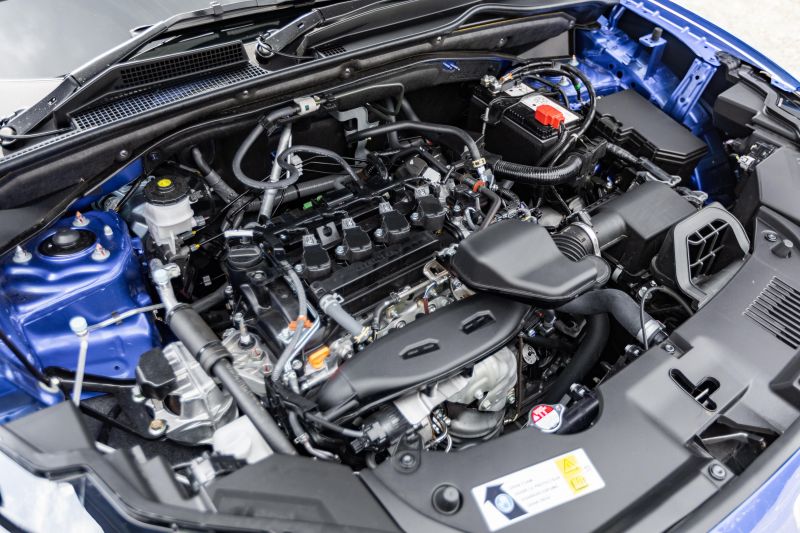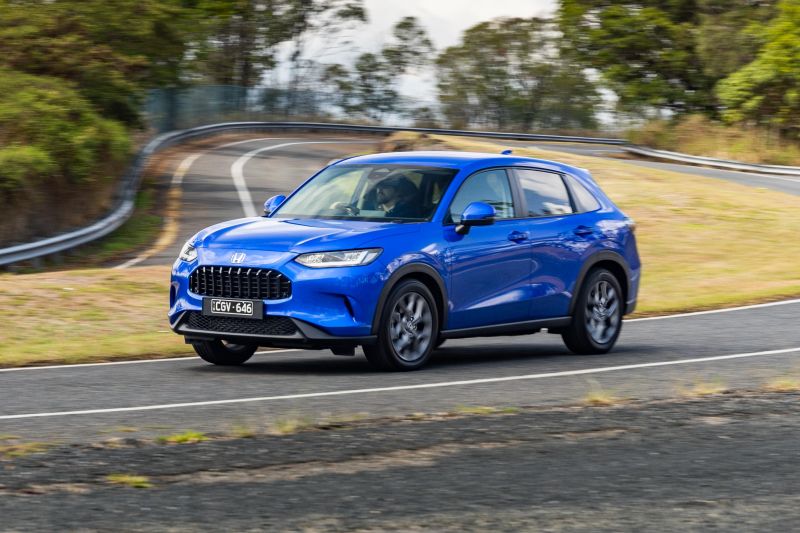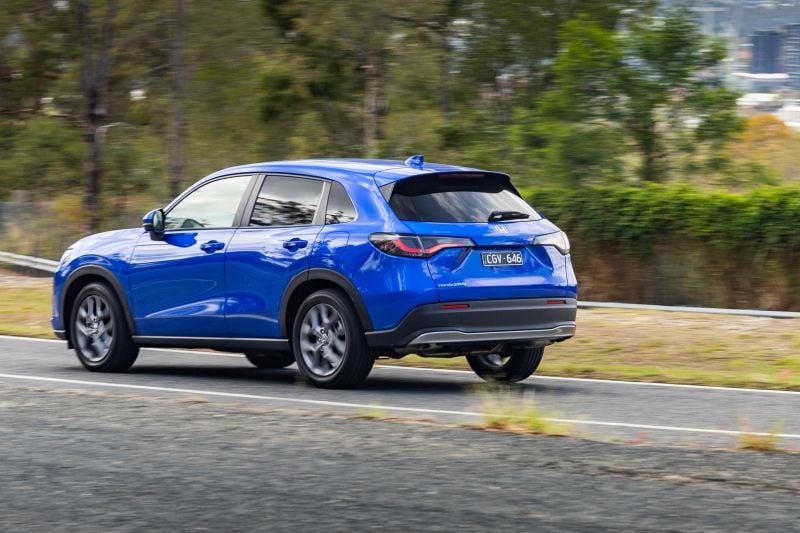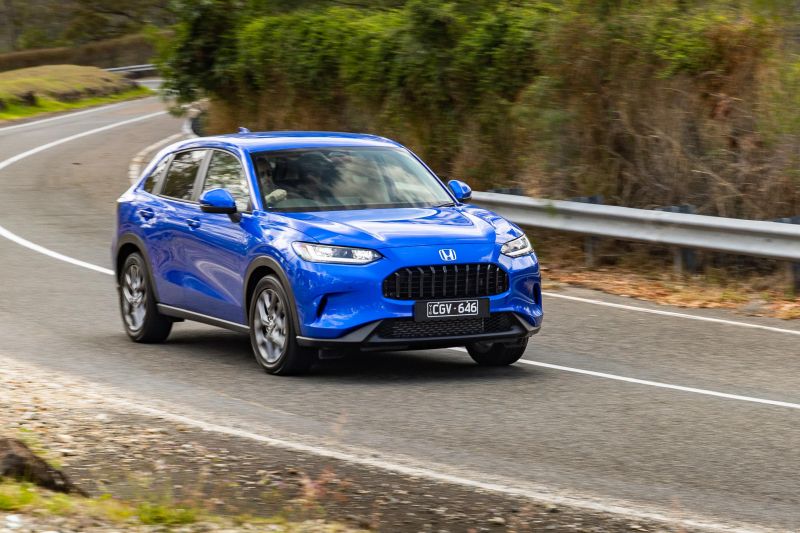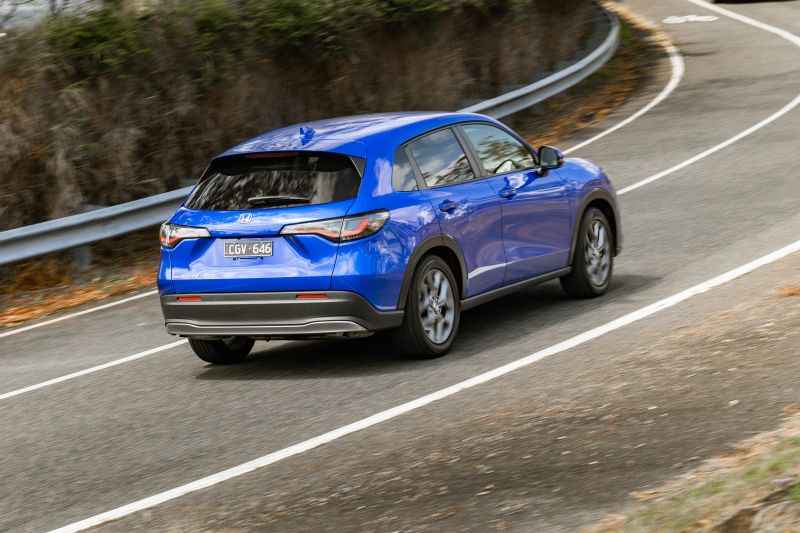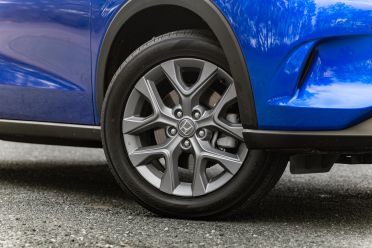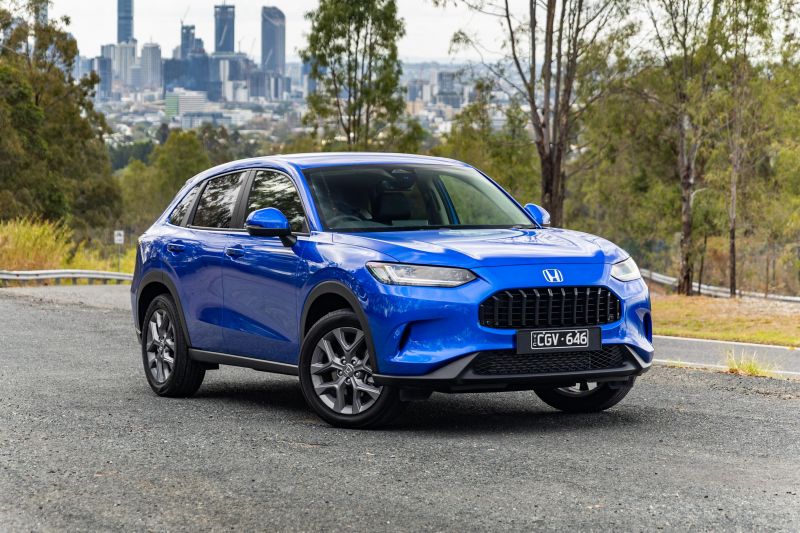Australians can’t get enough of SUVs, so Honda has given the people what they want.
The recently introduced Honda ZR-V slots in between the new-generation HR-V and CR-V, and the three SUVs are the key pillars of the Japanese brand’s revitalised line-up.
You can still buy a Civic or Accord if you fancy a car, but it’s not as though the ZR-V is some huge, hulking SUV. Instead, it’s quite low and sleek, almost like some kind of Civic wagon.
Despite only arriving midway through 2023, it’s already outselling the Civic. That’s understandable as not only do Australians prefer SUVs, but the ZR-V has a considerably lower base price.
How much does the Honda ZR-V cost?
Honda markets the new ZR-V as a mid-sized SUV, as it does the CR-V.
Of course, consumers don’t typically think in terms of VFACTS segments, so let’s talk cash and size. The petrol-powered ZR-V range is priced from $40,200 drive-away for the base VTi X to $48,500 drive-away for the VTi LX; Honda’s drive-away pricing applies nationwide.
Our VTi L tester sits in the middle, wearing a $43,200 D/A price tag. Honda also offers a single hybrid variant, the e:HEV LX, priced at $54,900 D/A. Based on a New South Wales postcode, the Mazda CX-5 line-up ranges from $38,888 to $60,301 drive-away, while the Hyundai Tucson ranges from $39,215 to $60,157 drive-away. Honda’s own CR-V is priced from $44,500 to $59,900 drive-away.
The ZR-V’s pricing, therefore, lines up with mid-sized SUV stalwarts. But what about its size? This new ‘tweener model is actually marketed as the HR-V in North America, which hints at its smaller dimensions. It measures 4568mm long, 1840mm wide and 1620mm tall on a 2655mm wheelbase.
That makes it one of the smaller vehicles in the mid-sized cohort. It’s almost identical in size to a “mid-sized” Mazda CX-5 (4575mm x 1845mm x 1675mm on a 2700mm wheelbase).
Check out how it compares to some “small” SUVs:
Just seeing a ZR-V parked next to a Toyota RAV4 or even a CX-5 reveals this isn’t a big, boxy SUV.
It looks like lower to the ground, while its styling is a mixed bag: the rear is attractive (one person even commented the tail lights are somewhat BMW-like, in a good way), but the front resembles a grimacing Pokemon or, from a distance, a Ford Escape.
The overall body is attractive, so that’s nothing a little mid-life facelift couldn’t fix.
What is the Honda ZR-V like on the inside?
The ZR-V has one of the nicest interiors in the segment, easily.
Not only does it have an attractive design with high-quality materials, there are plenty of thoughtful touches.
You open doors that in turn close with a solid thunk, and sit in seats that have an unusual, button-tufted look with pale grey piping.
The metal-look climate control dials are tactile and have subtle backlighting, while Honda shows how you’re supposed to do the ‘hidden’ air vent thing that’s all the rage with automakers today. As in the Civic, the vents are hidden as part of a metallic honeycomb mesh trim piece that stretches across the dash.
The dashtop and the door cards are finished in soft-touch plastic, as is almost the entire centre console.
That’s right, instead of hard plastic or just a couple of leatherette pads where your knees might touch the console, there’s one vast swath of leatherette trim with white stitching elements.
There are cars that cost thousands more than this that don’t even offer soft touch points as extensive as those in the ZR-V.
Honda has even put soft-touch trim where it could have easily gotten away with using hard plastic, such as at the base of the windshield. Paddle shifters that would feel like inexpensive plastic in most rivals have a textured, metal-like finish.
The centre console is notable not just for its material quality, but also for its distinctive, bridge-like design. There’s a shelf underneath, flanked by a USB outlet on each side, while the centre console has a fairly deep storage bin. Soft ambient lighting glows from underneath the bridge, too.
The infotainment system has a nice, simple layout with menus that are easy to navigate and graphics more modern than previous Honda products. Only Apple CarPlay has wireless connectivity, however, with Android Auto requiring a cable.
The camera quality is also rather average, something we’ve noticed in many Japanese products. The Korean and Chinese brands do this better.
The digital instruments are attractive, with a simulation of analogue dials flanking a picture of the car itself that shows you if you have your lights on and in what direction your steering is pointing.
You can customise what information appears within each of the dials. The steering wheel feels good, though my only gripe is the switchgear here is a bit clickety-clack to use.
Honda may call the ZR-V a mid-sizer, but it just doesn’t feel like it.
Don’t get me wrong, it’s not cramped. At 180cm tall, I can comfortably sit behind my own seating position, and the floor is commendably flat. But where a RAV4 or Haval H6 has a tremendous feeling of space, the ZR-V feels more like a roomy hatchback.
There are plenty of amenities back here. They include two USB-C outlets, air vents, a fold-down armrest with cupholders, and map pockets.
You can also install child seats using one of the three top-tether or two ISOFIX anchor points.
Open the tailgate and you’ll find 380L of space. The rear seats fold flat, with cargo space expanding to 876L (measured to the window line) or 1312L (measured to the roof). There’s a 12V outlet in the boot, plus a space-saver spare under the boot floor.
With 380L of space, the boot isn’t particularly large; Mazda claims 438L of space in the CX-5, for example.
What’s under the bonnet?
The ZR-V is powered by a 1.5-litre turbocharged four-cylinder engine producing 131kW of power and 240Nm of torque.
Drive is sent to the front wheels via a continuously variable transmission.
Those outputs are comparable to other turbocharged four-cylinder SUVs at this price point, such as the Skoda Karoq, Nissan Qashqai and Mitsubishi Eclipse Cross (all with 110kW/250Nm).
Over a loop comprising a mix of inner-city, suburban and highway driving, we averaged 7.5L/100km – close to the official 7.2L/100km claim. Over the course of a week, this rose to 9.0L/100km, which is rather disappointing. Fortunately, the ZR-V requires only 91 RON regular unleaded fuel.
How does the Honda ZR-V drive?
The ZR-V mightn’t feel like a big, bulky SUV to sit in, but this pays dividends when it comes to driving dynamics.
For starters, the ZR-V doesn’t feel all that high off the ground so you have a more car-like seating position than in many SUVs. That also means the centre of gravity feels lower, and in turn body roll is well controlled.
On a spirited mountain drive, the ZR-V felt nicely tied down in the bends with sharp turn-in, though the Yokohama tyres sometimes chirped as they scrambled for grip.
The steering has good weighting and a decent amount of feel, and the ride is firm without being harsh – even on unsealed roads, it proves pliant, and while you feel surface changes they don’t send sharp impacts into the cabin.
The driving experience, therefore, is great but for one thing: the powertrain.
Now, it’s not bad. Far from it: the turbocharged four is punchy and responsive, and engine noise is fairly well quelled.
Alas, what you do hear of the engine isn’t all that pleasant, with the ZR-V’s mill having a gravelly, gritty sound. There’s rev flare from the CVT, and while you can use the paddle shifters to change between simulated shift points, putting the car into Sport mode just seems to exacerbate the rev flare.
CVTs can make less powerful vehicles feel zippier, but there are diminishing returns the more powerful the engine, to the point where something with decent outputs like this would simply feel better with a conventional automatic (or manual, if people still bought those).
Tootling around town, the ZR-V’s CVT is fine. Given how poised its dynamics are, though, we wish there was a transmission that better suited its rather sporty character.
Our tester had an odd vibration at between 70 and 90km/h, but judging by other ZR-Vs we’ve had through the CarExpert garage this was an issue specific to this particular tester.
Lane assist systems seem to bother a lot of drivers, and we commonly hear from people who just turn them off on reflex. I’m not averse to these systems, and I don’t mind even the more assertive lane centring systems found in, for example, Hyundai and Kia products.
Despite this, I found myself leaving the ZR-V’s lane system off (and fortunately it defaults to off). It’s domineering and intrusive, constantly tugging at the wheel.
Another gripe is Honda’s insistence of making Sport mode selectable only by pulling the shifter down another detent. The end result of this is you end up accidentally pulling the shifter too far and putting it in Sport mode, which means if you’re anything like me you’ll occasionally accidentally put the car into Neutral when you’re trying to shift it into Reverse.
Honda isn’t the only brand that does this – Suzuki is also guilty – and it makes little sense when the other drive mode, Eco, is selectable via a button.
There’s still much to praise the ZR-V for. Cruise control is easy to activate and it smartly judges distances, while there’s a separate limiter function. The vehicle remembers your auto hold setting, and as seen in more expensive vehicles the nozzles are integrated into the wipers themselves.
Finally, the adaptive LED headlights are superb, with bright illumination and active cornering lights. While most rival brands have only recently made LED headlights standard across their ranges, Honda has moved the bar.
What do you get?
ZR-V VTi X highlights:
- Adaptive LED headlights
- Active cornering lights
- 17-inch alloy wheels
- Rain-sensing wipers
- Hill descent control
- 9.0-inch touchscreen infotainment system
- Wireless Apple CarPlay
- Wired Android Auto
- 10.2-inch digital instrument cluster
- 8-speaker sound system
- Black fabric upholstery
- Dual-zone climate control
- Auto-dimming rear-view mirror
- Leather-wrapped steering wheel and shifter
- Upholstered centre console with French stitching
- Front USB ports (1 x USB-A and 1 x USB-C)
- Rear USB ports (2 x USB-C)
- Rear air vents
- Space-saver spare wheel
- 60/40 split/fold rear seats
ZR-V VTi L adds:
- 18-inch alloy wheels
- Heated exterior mirrors
- Hands-free power tailgate with walk-away closing
- Rear privacy glass
- Combination LED tail lights
- Black leatherette upholstery
- Heated front seats
- Metal paddle shifters
- LED ambient lighting (roof)
ZR-V VTi LX adds:
- 18-inch two-tone alloy wheels
- Body-coloured lower bumpers and wheel arches
- Selectable drive modes (Sport, Normal, Economy)
- 12-speaker Bose sound system
- Wireless phone charger
- Satellite navigation
- Black leather upholstery
- 8-way power driver’s seat with memory
- 4-way power passenger seat
- Heated rear seats
- Heated steering wheel
- Sports pedals
- ‘Door Line Illumination’
- Auto-tilting mirrors in reverse
- Plasmacluster air purification system
Is the Honda ZR-V safe?
The Honda ZR-V has yet to be tested by ANCAP, though its Euro NCAP counterpart gave it four stars. This rating applies to hybrid models.
-
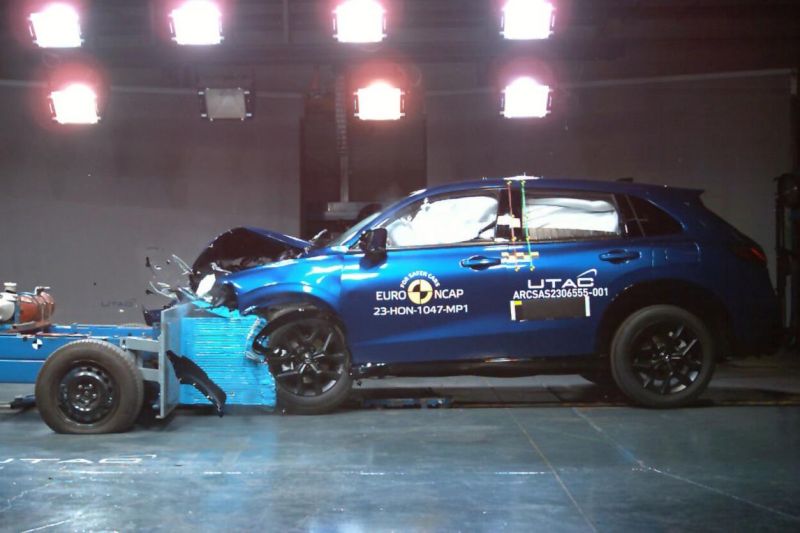
Euro NCAP crash testing
It received an adult occupant protection rating of 79 per cent, a child occupant protection rating of 86 per cent, a vulnerable road user protection rating of 81 per cent, and a safety assist rating of 68 per cent.
Standard safety equipment includes:
- Autonomous emergency braking with pedestrian and cyclist detection
- Adaptive cruise control with low-speed follow
- Driver attention monitoring
- Lane-keep assist
- Traffic Jam Assist
- Traffic sign recognition
- Front and rear parking sensors
- Tyre pressure monitoring
- 11 airbags
- Dual front and front knee airbags
- Centre airbag
- Front and rear side airbags
- Full-length curtain airbags
VTi LX and above get blind-spot monitoring, rear cross-traffic alert and a surround-view camera. It’s a bit disappointing blind-spot monitoring and rear cross-traffic alert can’t be found in more affordable ZR-Vs, though at least visibility is decent.
How much does the Honda ZR-V cost to run?
All Honda ZR-V models are backed by a five-year, unlimited-kilometre warranty.
Servicing is required every 12 months or 10,000km, whichever comes first. The first five services are capped at $199 each.
Those may be shorter intervals than many rivals, but those service prices are among the lowest on the market.
CarExpert’s Take on the Honda ZR-V
If you think of this as a Toyota RAV4 or Hyundai Tucson rival, you may be disappointed by the ZR-V’s size.
This is very much on the cusp of conventional small and medium SUV sizing, and while there’s enough room in the back seat and boot it doesn’t feel as voluminous as some similarly priced vehicles.
Think of this as a Civic wagon, though – and there’s merit to this, as they share a platform and powertrains – and the ZR-V is more appealing. It feels more like a wagon than an SUV behind the wheel after all, matching its exterior styling.
In VTi LX guise, it’s only $1300 more than the comparable Civic, and Honda doesn’t offer a cheaper Civic to line up with the ZR-V VTi L tested here.
Behind the wheel is a lovely place to be in the ZR-V, with a premium-feeling cabin that’s attractive and tactile. It rides and handles well, though it deserves a more inspiring powertrain.
If you’re after maximum metal for your money, the ZR-V isn’t the best choice. But if you’re after a car that’s elegantly presented and offers sufficient (if not abundant) room, it’s worthy of consideration.
Click the images for the full gallery
BUY: Honda ZR-V
MORE: Everything Honda ZR-V

